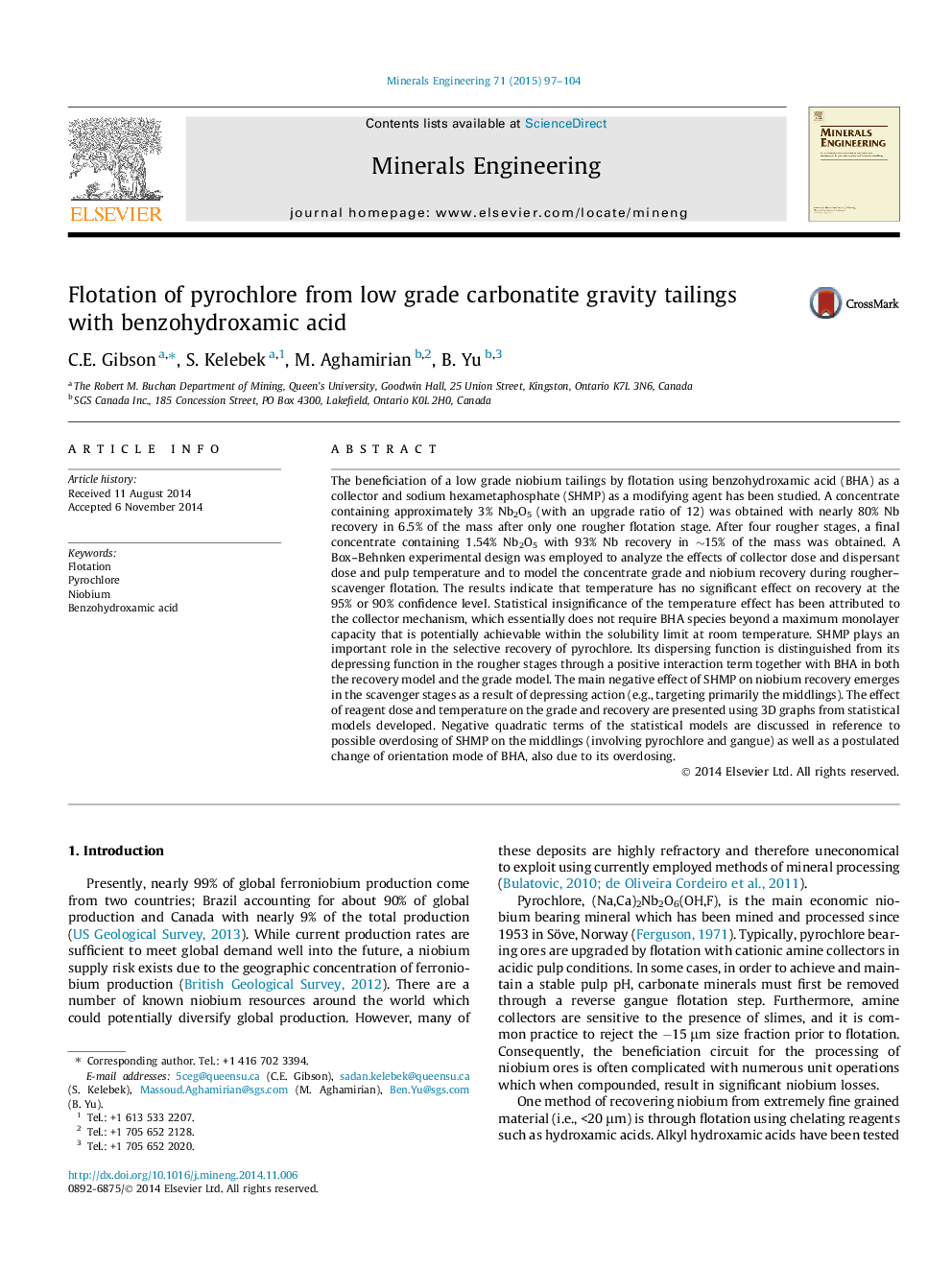| Article ID | Journal | Published Year | Pages | File Type |
|---|---|---|---|---|
| 6673031 | Minerals Engineering | 2015 | 8 Pages |
Abstract
The beneficiation of a low grade niobium tailings by flotation using benzohydroxamic acid (BHA) as a collector and sodium hexametaphosphate (SHMP) as a modifying agent has been studied. A concentrate containing approximately 3% Nb2O5 (with an upgrade ratio of 12) was obtained with nearly 80% Nb recovery in 6.5% of the mass after only one rougher flotation stage. After four rougher stages, a final concentrate containing 1.54% Nb2O5 with 93% Nb recovery in â¼15% of the mass was obtained. A Box-Behnken experimental design was employed to analyze the effects of collector dose and dispersant dose and pulp temperature and to model the concentrate grade and niobium recovery during rougher-scavenger flotation. The results indicate that temperature has no significant effect on recovery at the 95% or 90% confidence level. Statistical insignificance of the temperature effect has been attributed to the collector mechanism, which essentially does not require BHA species beyond a maximum monolayer capacity that is potentially achievable within the solubility limit at room temperature. SHMP plays an important role in the selective recovery of pyrochlore. Its dispersing function is distinguished from its depressing function in the rougher stages through a positive interaction term together with BHA in both the recovery model and the grade model. The main negative effect of SHMP on niobium recovery emerges in the scavenger stages as a result of depressing action (e.g., targeting primarily the middlings). The effect of reagent dose and temperature on the grade and recovery are presented using 3D graphs from statistical models developed. Negative quadratic terms of the statistical models are discussed in reference to possible overdosing of SHMP on the middlings (involving pyrochlore and gangue) as well as a postulated change of orientation mode of BHA, also due to its overdosing.
Related Topics
Physical Sciences and Engineering
Chemical Engineering
Chemical Engineering (General)
Authors
C.E. Gibson, S. Kelebek, M. Aghamirian, B. Yu,
